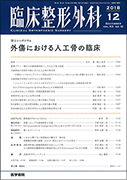1) Imagama S, Matsuyama Y, Sakai Y, et al. Image classification of idiopathic spinal cord herniation based on symptom severity and surgical outcome:a multicenter study. J Neurosurg Spine 2009;11:310-9.
2) 八木秀樹,今釜史郎,伊藤全哉・他.特発性脊髄ヘルニアに対する手術治療—麻痺の様式による違い.中部整災誌2014;57:781-2.
3) Nakashima H, Kanemura T, Yagi H1, et al. Factors affecting the severity of neurological disorders in thoracic idiopathic spinal cord herniation. Spine (Phila Pa 1976) 2018;43(22):1552-8.
4) Nakashima H, Imagama S, Yagi H, et al. Clinical and radiographical differences between thoracic idiopathic spinal cord herniation and spinal arachnoid Cyst. Spine (Phila Pa 1976) 2017;42:E963-8.
5) Wortzman G, Tasker RR, Rewcastle NB, et al. Spontaneous incarcerated herniation of the spinal cord into a vertebral body:a unique cause of paraplegia. Case report. J Neurosurg 1974;41:631-5.
6) Miura Y, Mimatsu K, Matsuyama Y, et al. Idiopathic spinal cord herniation. Neuroradiology 1996;38:155-6.
7) Nakamura M, Fujiyoshi K, Tsuji O, et al. Long-term surgical outcomes of idiopathic spinal cord herniation. J Orthop Sci 2011;16:347-51.
8) Summers JC, Balasubramani YV, Chan PC, et al. Idiopathic spinal cord herniation:Clinical review and report of three cases. Asian J Neurosurg 2013;8:97-105.
9) 大谷晃司.脊髄くも膜囊腫.土屋弘行,紺野愼一,田中康仁・他(編集).今日の整形外科治療指針.第7版.東京;医学書院;2016, p.562.

